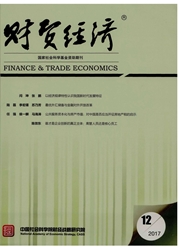

 中文摘要:
中文摘要:
金融危机后,改革现有的国际货币体系,逐步推进“去美元化”进程,已经成为国际社会的共识。我国正在致力于推动人民币国际化,人民币实现区域化是国际化进程中的重要战略步骤。本文基于国际货币理论和人民币区域化理论,从贸易、投资以及人员往来等角度分析了人民币在周边地区的使用现状,深入讨论了人民币区域化的发展战略,结论认为:(1)我国与东盟及东亚地区贸易融合和依存度的不断提升、高速增长的直接投资和日益频繁的人员往来,为人民币在东盟及东亚实现区域化奠定了坚实的基础;(2)推进人民币深度区域化需要实现对内市场化、对外国际化,同时加快经济增长转型以保证人民币币值稳定,并鼓励金融机构业务国际化配置和ODI的增加;(3)加强人民币离岸金融中心的建设、渐进有序开放资本账户、实现人民币自由兑换、扩宽海外人民币的投融资渠道,也是人民币实现区域化的重要机制保障。
 英文摘要:
英文摘要:
After the financial crisis, it has become the consensus of international community to reform the existing international monetary system and gradually push forward the process of "de-dollarization". China is committed to promoting the internationalization of the RMB. RMB regionalization is an important strategic step in the process of internationalization. Based on the international monetary theory and the theory of RMB regionalization, this paper analyzes the current situation of RMB regionalization from the perspective of trade, investment and personnel exchanges as well as the development strategy of RMB regionalization. This paper concludes that: (1)the rising trade dependence, more and more FDI and increasingly frequent personnel exchanges have laid a solid foundation to achieve regionalization of RMB in ASEAN and East Asia~ (2)the promotion of RMB regionalization needs further marketization and internationalization of the economy and transformation of economic growth in order to guarantee the value of RMB, more ODI and international deployment of financial business are also helpful~ (3)building an offshore financial center, gradual and orderly liberalization of the capital account, achieving free convertibility of the RMB, widening the investment for overseas RMB will also be important mechanisms for RMB regionalization.
 同期刊论文项目
同期刊论文项目
 同项目期刊论文
同项目期刊论文
 期刊信息
期刊信息
